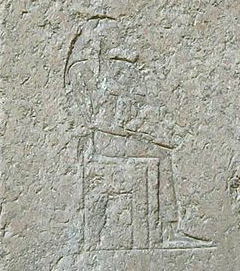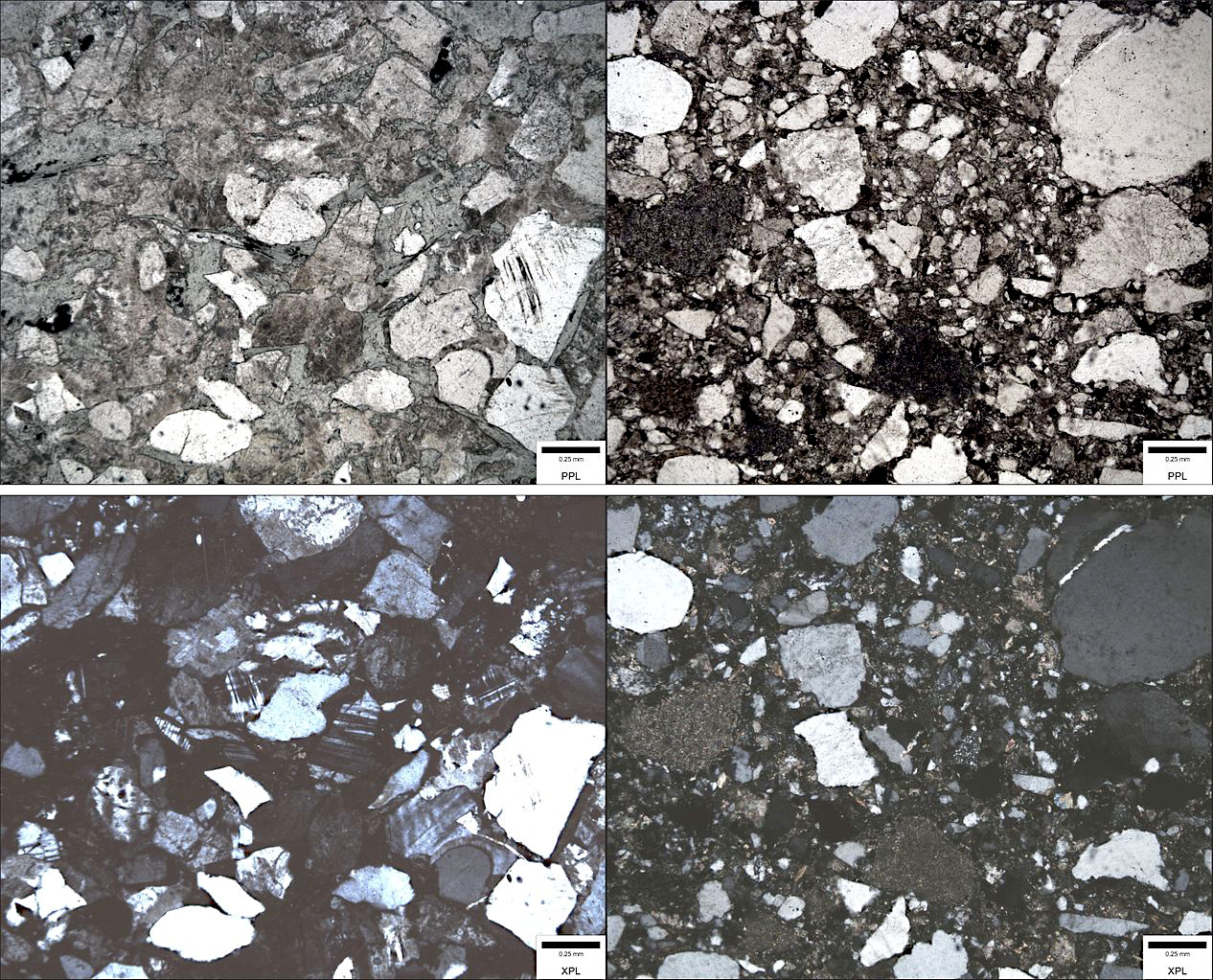|
Mastabat Al-Fir'aun
The Mastabat al-Fir'aun ( Romanised: Maṣṭabat al-Firʿawn), also referred to in Egyptological literature as the ''Mastaba el-Faraun'', ''Mastabat el-Faraun'' or ''Mastabat Faraun'', and meaning "Bench of the Pharaoh") is the grave monument of the ancient Egyptian king Shepseskaf (reign 2510–2503 BC), the last king of the Fourth Dynasty documented to date. It is located in South Saqqara halfway between the Pyramid of Djoser at Saqqara and the pyramids of Sneferu, the founder of the Fourth Dynasty, at Dahshur. The structure is located close to the pyramid of Pepi II, a ruler of the Sixth Dynasty. The stone quarry for the structure is located west of the Red Pyramid of Sneferu. The Mastaba of Shepseskaf Discovery The Mastabat al-Fir’aun was described for the first time by[...More Info...] [...Related Items...] OR: [Wikipedia] [Google] [Baidu] |
Shepseskaf
Shepseskaf (meaning "His Ka is noble") was a pharaoh of ancient Egypt, the sixth and probably last ruler of the fourth dynasty during the Old Kingdom period. He reigned most probably for four but possibly up to seven years in the late 26th to mid-25th century BC. Shepseskaf's relation to his predecessor Menkaure is not entirely certain; he might have been his son or possibly his brother. The identity of his mother is highly uncertain as she could have been one of Menkaure's consorts or queen Khentkaus I or Neferhetepes. Similarly, Shepseskaf's relation to his probable successor on the throne, Userkaf, is not known although in the absence of clear indication of strife at the transition between the fourth and fifth dynasties, Userkaf could well have been his son or his brother. If Shepseskaf was succeeded directly by Userkaf rather than by Thampthis as claimed by some historical sources, then his death marks the end of the fourth dynasty. The transition to the fifth dyna ... [...More Info...] [...Related Items...] OR: [Wikipedia] [Google] [Baidu] |
John Shae Perring
John Shae Perring (24 January 1813, Boston, Lincolnshire – 16 January 1869, Manchester) was a British engineer, anthropologist and Egyptologist, most notable for his work excavating and documenting Egyptian pyramids. Career In 1837 Perring and British archaeologist Richard William Howard Vyse began excavating at Giza; they were later joined by Giovanni Battista Caviglia. They used gunpowder to force their way into several monuments and then to reach hidden chambers within them, such as the burial chamber of the pyramid of Menkaure, documenting them as they went. When Caviglia left the team to work independently, Perring became Vyse's assistant and when Vyse himself left for England in 1837 Perring continued the excavation with Vyse's financial support. As part of his work, Perring created several maps, plans and cross-sections of the pyramids at Abu Roasch, Gizeh, Abusir, Saqqara and Dahshur. He was the first to explore the interior of the Pyramid of Userkaf at Saqqara in ... [...More Info...] [...Related Items...] OR: [Wikipedia] [Google] [Baidu] |
Rainer Stadelmann
Rainer Stadelmann (24 October 1933 – 14 January 2019) was a German Egyptology, Egyptologist. He was considered an expert on the archaeology of the Giza Plateau. Biography After studying in Neuburg an der Donau in 1953, he studied Egyptology, orientalism, and archaeology at the University of Munich. He participated in 1955 and 1956 in the excavations of the Egyptian sun temple, sun temple of the 5th Dynasty pharaoh Userkaf at Abusir. He continued his studies at the University of Heidelberg, where in 1960 he wrote his doctoral thesis on the Syrian-Palestinian deities in Egypt. He was a technical assistant in Heidelberg until 1967, after which he became scientific director at the German Archaeological Institute in Cairo, where he served from 1989 to 1998. Since 1975, he was honorary professor at the University of Heidelberg. He participated in numerous excavations at Elephantine, Thebes, Egypt, Thebes, and Dahshur; at the latter, he explored and wrote about the Bent Pyramid and t ... [...More Info...] [...Related Items...] OR: [Wikipedia] [Google] [Baidu] |
Causeway
A causeway is a track, road or railway on the upper point of an embankment across "a low, or wet place, or piece of water". It can be constructed of earth, masonry, wood, or concrete. One of the earliest known wooden causeways is the Sweet Track in the Somerset Levels, England, which dates from the Neolithic age. Timber causeways may also be described as both boardwalks and bridges. Etymology When first used, the word ''causeway'' appeared in a form such as "causey way", making clear its derivation from the earlier form "causey". This word seems to have come from the same source by two different routes. It derives ultimately, from the Latin for heel, , and most likely comes from the trampling technique to consolidate earthworks. Originally, the construction of a causeway used earth that had been trodden upon to compact and harden it as much as possible, one layer at a time, often by slaves or flocks of sheep. Today, this work is done by machines. The same technique w ... [...More Info...] [...Related Items...] OR: [Wikipedia] [Google] [Baidu] |
Basalt
Basalt (; ) is an aphanite, aphanitic (fine-grained) extrusive igneous rock formed from the rapid cooling of low-viscosity lava rich in magnesium and iron (mafic lava) exposed at or very near the planetary surface, surface of a terrestrial planet, rocky planet or natural satellite, moon. More than 90% of all volcanic rock on Earth is basalt. Rapid-cooling, fine-grained basalt is chemically equivalent to slow-cooling, coarse-grained gabbro. The eruption of basalt lava is observed by geologists at about 20 volcanoes per year. Basalt is also an important rock type on other planetary bodies in the Solar System. For example, the bulk of the plains of volcanism on Venus, Venus, which cover ~80% of the surface, are basaltic; the lunar mare, lunar maria are plains of flood-basaltic lava flows; and basalt is a common rock on the surface of Mars. Molten basalt lava has a low viscosity due to its relatively low silica content (between 45% and 52%), resulting in rapidly moving lava flo ... [...More Info...] [...Related Items...] OR: [Wikipedia] [Google] [Baidu] |
Greywacke
Greywacke or graywacke ( ) is a variety of sandstone generally characterized by its hardness (6–7 on Mohs scale), dark color, and Sorting (sediment), poorly sorted angular grains of quartz, feldspar, and small rock fragments or sand-size Lithic fragment (geology), lithic fragments set in a compact, clay-fine matrix. It is a texturally immature sedimentary rock generally found in Paleozoic Stratum, strata. The larger Particle size (grain size), grains can be sand- to gravel-sized, and Matrix (geology), matrix materials generally constitute more than 15% of the rock by volume. Formation The origin of greywacke was unknown until turbidity currents and turbidites were understood, since, according to the normal laws of sedimentation, gravel, sand and mud should not be laid down together. Geologists now attribute its formation to submarine avalanches or strong turbidity currents. These actions churn sediment and cause mixed-sediment slurries, in which the resulting deposits may ex ... [...More Info...] [...Related Items...] OR: [Wikipedia] [Google] [Baidu] |
Portcullis
A portcullis () is a heavy, vertically closing gate typically found in medieval fortifications. It consists of a latticed Grille (architecture), grille made of wood and/or metal, which slides down grooves inset within each jamb of the gateway. Usage Portcullises fortified the entrances to many medieval castles, securely closing them off during times of attack or siege. Every portcullis was mounted in vertical grooves in the walls of the castle and could be raised or lowered quickly by using chains or ropes attached to an internal winch. Portcullises had an advantage over standard gates in that they could be closed immediately at a time of crisis by a single guard. Two portcullises to the main Gate, entrance would often be used. The one closer to the inside would be closed first, and then the one further away. This was used to trap enemies, and burning wood or fire-heated sand would usually be dropped onto them from murder-holes or the roof. Early thermal weapons#Hot oil, Hot oi ... [...More Info...] [...Related Items...] OR: [Wikipedia] [Google] [Baidu] |
Sandstone
Sandstone is a Clastic rock#Sedimentary clastic rocks, clastic sedimentary rock composed mainly of grain size, sand-sized (0.0625 to 2 mm) silicate mineral, silicate grains, Cementation (geology), cemented together by another mineral. Sandstones comprise about 20–25% of all sedimentary rocks. Most sandstone is composed of quartz or feldspar, because they are the most resistant minerals to the weathering processes at the Earth's surface. Like uncemented sand, sandstone may be imparted any color by impurities within the minerals, but the most common colors are tan, brown, yellow, red, grey, pink, white, and black. Because sandstone beds can form highly visible cliffs and other topography, topographic features, certain colors of sandstone have become strongly identified with certain regions, such as the red rock deserts of Arches National Park and other areas of the Southwestern United States, American Southwest. Rock formations composed of sandstone usually allow the p ... [...More Info...] [...Related Items...] OR: [Wikipedia] [Google] [Baidu] |
Unas
Unas or Wenis, also spelled Unis (, Hellenization, hellenized form Oenas or Onnos; died 2345), was a pharaoh, king, the ninth and last ruler of the Fifth Dynasty of Egypt during the Old Kingdom of Egypt, Old Kingdom. Unas reigned for 15 to 30 years in the mid-24th century BC (c. 2345–2315 BC), succeeding Djedkare Isesi, who might have been his father. Little is known of Unas' activities during his reign, which was a time of economic decline. Egypt maintained trade relations with the Levantine coast and Nubia, and military action may have taken place in southern Canaan. The growth and decentralization of the administration in conjunction with the lessening of the king's power continued under Unas, ultimately contributing to the collapse of the Old Kingdom some 200 years later. Unas built a Pyramid of Unas, pyramid in Saqqara, the smallest of the royal Egyptian pyramids, pyramids completed during the Old Kingdom. The accompanying mortuary complex with its high and valley tem ... [...More Info...] [...Related Items...] OR: [Wikipedia] [Google] [Baidu] |
Stele
A stele ( ) or stela ( )The plural in English is sometimes stelai ( ) based on direct transliteration of the Greek, sometimes stelae or stelæ ( ) based on the inflection of Greek nouns in Latin, and sometimes anglicized to steles ( ) or stelas ( ). is a stone or wooden slab, generally taller than it is wide, erected in the ancient world as a monument. The surface of the stele often has text, ornamentation, or both. These may be inscribed, carved in relief, or painted. Stelae were created for many reasons. Grave stelae were used for funerary or commemorative purposes. Stelae as slabs of stone would also be used as ancient Greek and Roman government notices or as boundary markers to mark borders or property lines. Stelae were occasionally erected as memorials to battles. For example, along with other memorials, there are more than half-a-dozen steles erected on the battlefield of Waterloo at the locations of notable actions by participants in battle. A traditional Wester ... [...More Info...] [...Related Items...] OR: [Wikipedia] [Google] [Baidu] |









